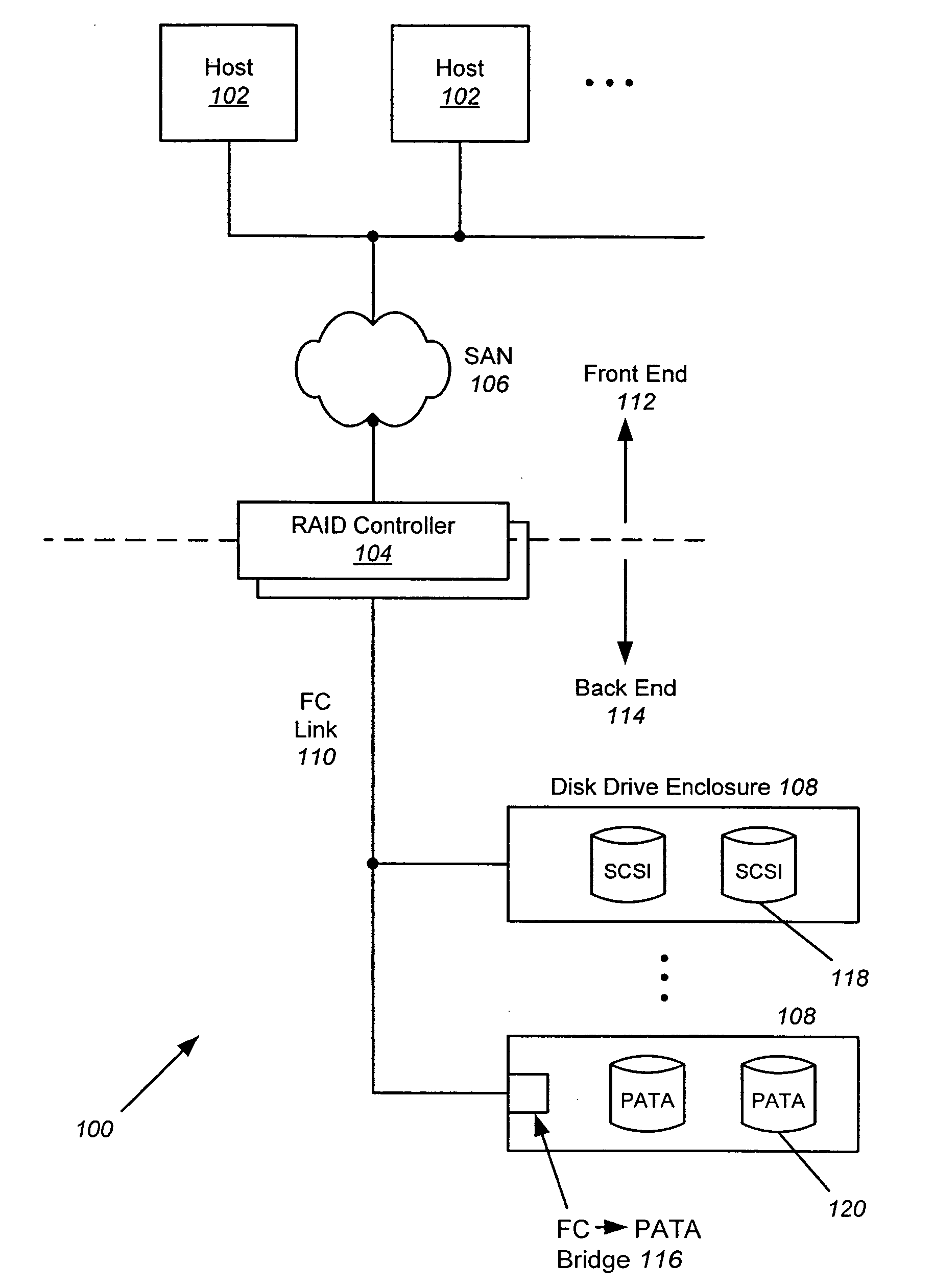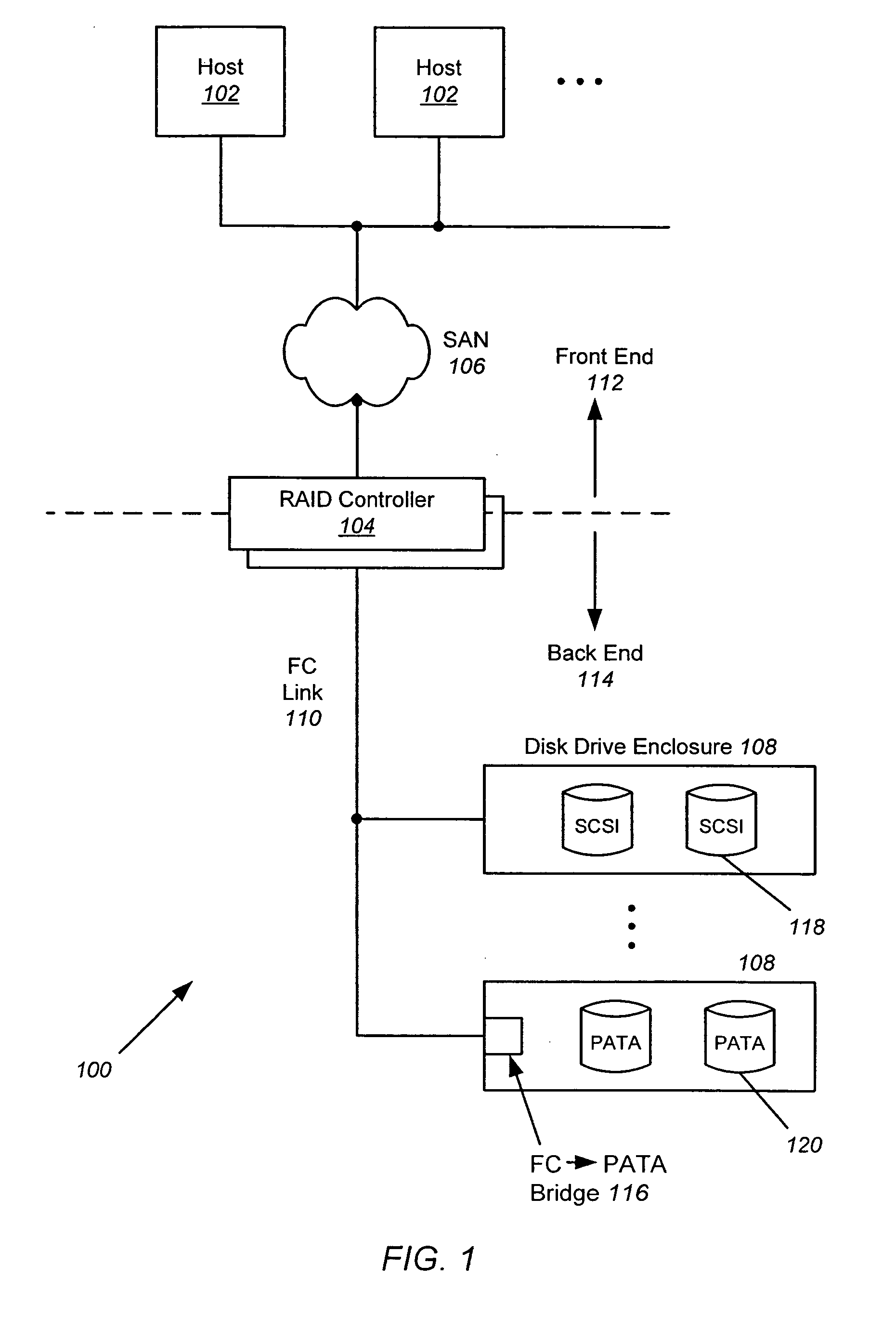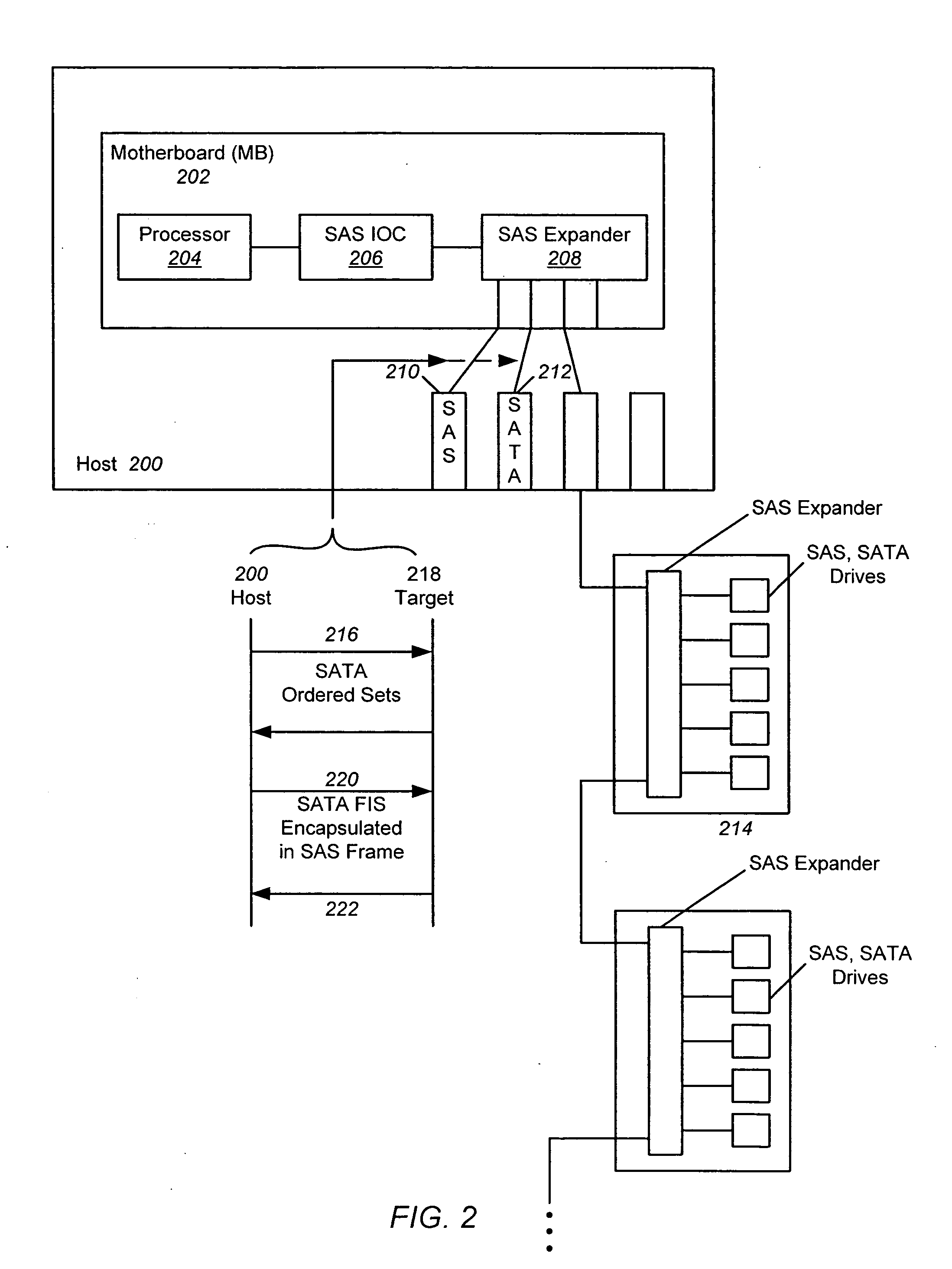Methodology for manipulation of SATA device access cycles
a technology of access cycle and sata device, applied in the field of device reliability, can solve the problems of system administrators being pressured to reduce the number of commands sent to the target device, idle device, latency (an increase in response time), etc., to improve the reliability of the target device, reduce utilization, and improve device reliability
- Summary
- Abstract
- Description
- Claims
- Application Information
AI Technical Summary
Benefits of technology
Problems solved by technology
Method used
Image
Examples
Embodiment Construction
[0063] In the following description of preferred embodiments, reference is made to the accompanying drawings which form a part hereof, and in which it is shown by way of illustration specific embodiments in which the invention may be practiced. It is to be understood that other embodiments may be utilized and structural changes may be made without departing from the scope of the preferred embodiments of the present invention.
[0064] Embodiments of the present invention are directed to controlling accesses to target devices such as disk drives by modifying the duty cycle profile of those devices to improve device reliability. The utilization of a target device is monitored, and if a device is being overused, that device is given a rest period by reserving it for a special initiator that does not send any commands to the device for a certain period of time. This period of time adds a delay to the processing of I / O commands for the target device being overutilized so that the device be...
PUM
 Login to View More
Login to View More Abstract
Description
Claims
Application Information
 Login to View More
Login to View More - R&D
- Intellectual Property
- Life Sciences
- Materials
- Tech Scout
- Unparalleled Data Quality
- Higher Quality Content
- 60% Fewer Hallucinations
Browse by: Latest US Patents, China's latest patents, Technical Efficacy Thesaurus, Application Domain, Technology Topic, Popular Technical Reports.
© 2025 PatSnap. All rights reserved.Legal|Privacy policy|Modern Slavery Act Transparency Statement|Sitemap|About US| Contact US: help@patsnap.com



